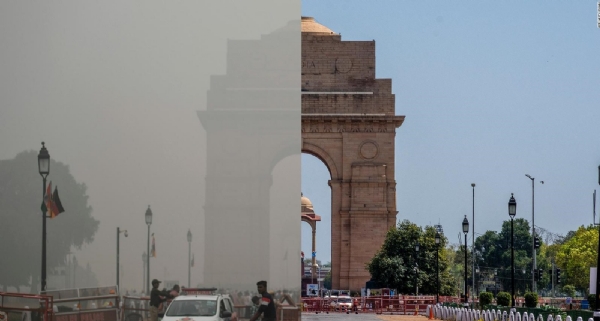Not a Diwali gift! Smog on the Horizon & Navigating the Winter Pollution Surge in India
16 Nov 2023 14:14:10
We recently saw many campaigns taking over the Hindu festive season, claiming that firecrackers are the root cause of increased pollution levels during this time of the year. Even the Apex court of the country had thus put certain restrictions on firecrackers during Diwali. However, all of this can create a misunderstanding of a concept that needs to be dealt with rationally and logically & not emotionally.

We need to ask the right questions here, every year, why is it always during the winter that the pollution levels rise? How can firecrackers be the sole purpose of the risen pollution levels? Before falling for any propaganda propagated by any star, understand the process and take the call.
As winter blankets the Indian subcontinent, a paradoxical phenomenon unfolds. While the season is associated with cool temperatures and festive cheer, it also marks a significant rise in pollution levels. The interplay of weather conditions and anthropogenic activities creates a perfect storm, contributing to the alarming surge in air pollution during the winter months.
Weather Dynamics:
One key factor amplifying pollution during winter in India is the unique meteorological conditions that prevail during this season. The winter months are characterized by a stable atmosphere, cool temperatures, and lower wind speeds. This atmospheric stability leads to the trapping of pollutants close to the Earth's surface, creating a phenomenon known as temperature inversion.
During temperature inversion, a layer of warm air traps cooler air and pollutants beneath it, preventing their dispersion. This stagnant air mass acts like a lid, enclosing pollutants emitted from various sources and allowing them to accumulate. As a result, the concentration of pollutants, including particulate matter (PM), nitrogen oxides (NOx), and volatile organic compounds (VOCs), steadily rises.
Biomass Burning:
The practice of crop residue burning in the northern states of India, such as Punjab and Haryana, exacerbates the pollution problem during winter. Farmers traditionally burn crop residues after harvest to clear fields quickly for the next planting season. The combustion of agricultural residues releases large quantities of pollutants into the atmosphere, including fine particulate matter and carbon monoxide.
The prevailing weather conditions during winter create an ideal environment for the lingering smoke and pollutants from biomass burning to settle and spread across vast regions. This not only contributes directly to the deterioration of air quality in the affected areas but also influences air quality levels in neighboring regions.
Increased Energy Consumption:
Winter in India coincides with an increase in energy consumption for heating purposes. Homes, offices, and industries rely on various forms of energy, including fossil fuels like coal and wood, to keep warm during the colder months. The combustion of these fuels releases pollutants such as sulfur dioxide (SO2) and particulate matter, adding to the overall pollution load.
Additionally, the increased use of transportation for commuting and the higher demand for electricity further escalate pollution levels. The emissions from vehicles and power plants become more pronounced due to the atmospheric conditions that hinder the dispersion of pollutants.
Vehicle Emissions:
Vehicular emissions are a major contributor to air pollution throughout the year, but their impact is magnified during winter. Cold temperatures result in incomplete combustion of fuel in engines, leading to higher emissions of pollutants such as nitrogen oxides and particulate matter. Moreover, the stable atmospheric conditions during winter trap these emissions close to the ground, intensifying their adverse effects on air quality.
The rise in pollution levels during winter in India is a complex interplay of meteorological conditions and anthropogenic activities. Understanding this intricate relationship is crucial for formulating effective strategies to combat the winter pollution paradox. A holistic approach that addresses agricultural practices, energy consumption, and vehicular emissions is imperative to ensure a breathable and sustainable environment for the residents of the Indian subcontinent. Clearly a ban on firecrackers is not a permanent solution to this problem as firecrackers aren't solely or even considerably responsible for the rise in pollution.
--
